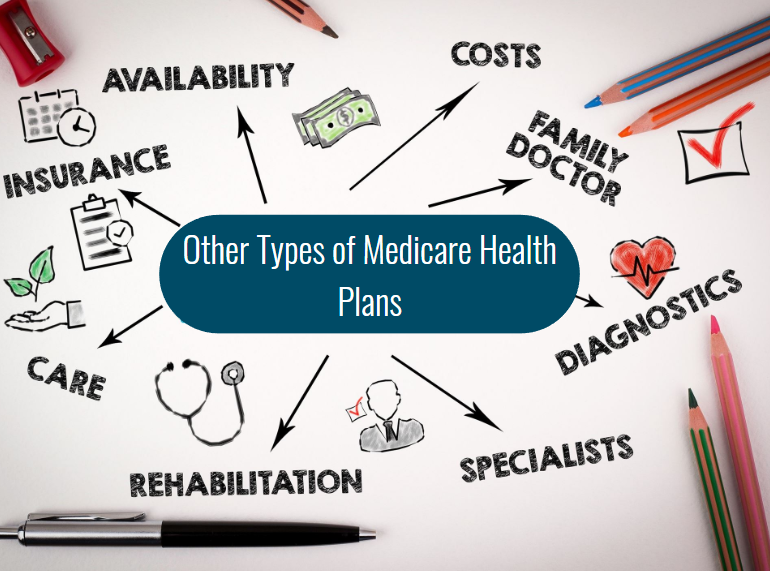by adminCenia | Mar 11, 2025 | Education
What you need to know about the Annual Enrollment Period (AEP)
Are you ready for 2025? Medicare has made changes that you need to know more about.
If you are looking for more information, this guide is going to give you more information on Annual Enrollment Period for 2025
What is the Annual Enrollment Period?
Annual Enrollment Period which spans from October 15 to December 7 is a timeframe during each Medicare beneficiary can evaluate their current coverage — whether it’s Original Medicare with a Standalone Prescription Drug Plan or Medicare Advantage with Prescription Drug coverage and make changes.
During Annual Open Enrollment, a recipient can do the following things:
• Switch Medicare Advantage plans, change from Medicare Advantage back to their Original Medicare or even the other way around
• Add a Standalone Part D Prescription Drug Plan (PDP)
• Change from one Part D Prescription Drug Plan (PDP) to another Prescription Drug Plan.
The Annual Enrollment Period starts on October 15 and finishes on December 7. Requested changes will be effective on January 1.
Tips to Get Help
Licensed agents certified to offer Medical Insurance Plans are available if you need assistance with Medicare Advantage (Part C), Medicare Supplement Insurance (Medigap) and/or Part D Prescription Drug Plans. We have tools to check on the medications you need, the pharmacies you visit and your medication costs. And if you plan to enroll in Part C, we can check that your doctors are in network. In the event that you search a coverage plan online, make sure that the coverage plan covers each of your medications, and that your pharmacies are accessible.
Bottom Line
It is critical to carefully read the information sent to you by your coverage provider since this will cover any potential changes. Annual Enrollment Period is additionally a decent time to ask yourself whether you are genuinely happy with your current plan.
by adminCenia | Mar 11, 2025 | Education, Medicare, Prescription Drug Coverage(Part D)
Understanding Part D: Prescription Drug Coverage for 2025
Americans spend more than any other country in the develop world for their prescribed medications. Unfortunately, Original Medicare (Part A and Part B) does not cover prescribed medications and there are penalties for not having a plan to cover prescribed medications. During your Initial Enrollment Period, you can buy Part D as a standalone plan or combined with a Medicare Advantage plan.
Part D only covers prescribed medications. The medications are divided into formulary tiers and the copay of each drug depends on which tier it falls under.
There is two ways you can buy Part D: Prescription Drug Coverage
- Part C may have Part D included
- Standalone Part D Plan
If you buy the wrong plan, then you can change it during the Annual Enrollment Period(AEP) that runs through Oct 15-Dec 7, or if you qualify for a special enrollment period then you can change it before AEP. Having the right plan is essential to avoid all the costs of prescription drugs as you move through the four stages. Several plans are available in the market with their own tiers and some costs more than other. It is important to find out how much each drug will cost you in the plan that you are considering to buy.
Part D has four stages, and you pay for your co-pay or coinsurance for your drugs as you move through the four stages. Every year you start at the Annual Deductible stage or the Initial Coverage Stage if your plan has no deductible. If you are taking drugs that are costly then this will move you to the Coverage Gap. At the Coverage Gap you are more responsible for your drug costs.

by adminCenia | Mar 10, 2025 | Education, Medicare, Medicare Advantage(Part C)
Are you thinking of getting a Medicare Advantage, also known as Part C, to cover the medical expenses that Medicare does not cover? If you are, how do you know which Medicare Advantage Plan is the right one for you from so many choices offered by different companies?
Before getting trap with an unwanted plan for a whole year or with unexplained medical costs make sure that you avoid these top 3 crucial mistakes before you enroll.
What is a Medicare Advantage Plan (Part C)?
A Medicare Advantage Plan is an insurance plan that you can buy from a private insurance company to continue administering your Medicare benefits instead of Original Medicare. If you join a Medicare Advantage Plan, Part A (Hospital) and Part B (Medical) will be covered by the Medicare Advantage of your choice. Part D Prescription Drug Coverage may be embedded in the plan already. Medicare Advantage is known for providing benefits that Original Medicare will never cover. For example; vision, dental, hearing aids, fitness gym membership, transportation, and many more benefits might be covered.
Are you ready to enroll? Before enrolling we want to help you to avoid this mistakes that can make you question why you got a Medicare Advantage instead of a Medicare Supplement Plan.
Top 3 Mistakes to Avoid When Enrolling into Part C:
Doctors are not in the Network: Are you sure that your Medicare Advantage plan covers your doctor and specialist that you are currently receiving treatment from? You try to make an appointment with your specialists, only to be told that he is out of network and if you see him you will be charged for the visit. This is the top mistake beneficiaries make when enrolling into a Medicare Advantage Plan.
When enrolling into a Medicare Advantage, it is important that you check if your doctor is in the plan, especially if you are enrolling into a Medicare Advantage plan that is an HMO. In a Health Maintenance Organization (HMO), you can only go to doctors and health care providers and hospitals that are in the network, except in case of an emergency. Also, a referral is needed to see specialists.
Prescription Drugs not covered: One of the key benefits of a Medicare Advantage plan is that it may have Part D Prescription Drugs embedded in the plan. Medicare beneficiaries are required to have Part D Prescription Drug Coverage within 63 days after their Initial Enrollment Period is over. So having it seems like a good idea, even if you are not taken any prescription drugs.
But if you are taking medications, you have to check to see if all your current prescribed drugs are cover before enrolling and how much is your co-pay at the Initial Phase and during the Coverage Gap and Catastrophic Phase because drug prices are ridiculous high. When a member hits the phase called the Coverage Gap, the beneficiary has to pay more of their drug costs until they reach their Catastrophic Phase. This can be a burden just to be paying so much on Prescription Drugs alone and not medical care.
Unexpected and unexplained charges: Beneficiaries assume that all the benefits are covered at zero co-pay when enrolling in Medicare Advantage Plans. That is not the case. Before making a decision to enroll, we need to be aware of the maximum out of pocket and the co-pays for services used.
Conclusion
There are many advantages that a beneficiary can have if they enroll in a Medicare Advantage Plan. But before enrolling, it is important to check if doctors or prescription drugs are covered to avoid having the wrong plan for the whole year and the unnecessary costs that can be avoided by simply picking the right plan.

by adminCenia | Mar 10, 2025 | Education, Medicare
Are you new to Medicare and confused? You are not alone. Every day about 10,000 individuals are turning 65 years old and enrolling into Medicare. Medicare is the federal health insurance program for individuals who are 65 or older. Individuals with disabilities who are younger than 65 years might qualify as well. If you do qualify you will receive a Medicare card that lets you know when your Medicare begins. If you are soon to be 65, I do recommend you check all of your options and avoid making mistakes that will affect you financially.
Penalty for Not Enrolling in Part B
If you have credible coverage from an employer policy, then you are exempt from enrolling in Part B and can enroll later. But if you do not have creditable coverage and you are 65 years old, then you have to enroll into Medicare. The penalty of not enrolling in Part B comes with a lifetime penalty for every month that you go uncovered. Your penalty is 10% each year that you do not enroll. For example if you decide to enroll at age 67 and had no credible coverage for 2 years, then your penalty for not having Part B is 20%.
Not Exploring More Options for More Coverage
What happens next after enrolling in Medicare Part A and Part B? Medicare Part A and Part B have deductibles, co-insurance and co-payments that never end. Essential benefits like vision, dental, hearing aids and prescribed medications are not covered. To stay financial stable, Medicare beneficiaries will need more coverage. The worst thing a Medicare beneficiary can do is not to enroll for more coverage. We have Medicare Advantage and Medicare Supplement plans available to help us manage Medicare costs.
Part D Prescription Drug Plan Penalty & Costs
If you do not have a Prescription Drug Plan then you will pay for all your prescribed drugs. Having a Prescription Drug Coverage avoids further financial hardships and penalties. If a Medicare beneficiary doesn’t have this coverage then there is a penalty of 1% for each month that you have no coverage, even if you are not taking any prescription drugs. It is a good idea to enroll in a Prescription Drug Plan during your Initial Enrollment Period.
Not Evaluating the Plan During the Annual Open Enrollment
Medicare has several enrollment periods that a beneficiary can take advantage of. If you are turning 65 years old or you are enrolling for Medicare the first time, you will have the Initial Enrollment period. During this period you can enroll in a Medicare Advantage, Medicare Supplement or a Part D Prescription Drug Plan. You do not have to wait for the Annual Enrollment Period (AEP) that starts October 1st to Dec 7th. During the Annual Enrollment Period, a beneficiary can make changes to their plans. But this period is not taken advantage of. Every year Medicare beneficiaries have an opportunity to review their Medicare plan and make changes to their plans if it does not meet your current needs any more.
To Conclude
If you are new to Medicare, you have to consider your options very carefully to avoid unwanted financial hardships and penalties. Medicare Advantage, Medicare Supplement and Part D: Prescription Drug Plans are available options. Finding the right option for you will pay off in the long run.

by adminCenia | Mar 7, 2025 | Education, Retirement
Whether you should file for Social Security retirement at age 65 depends on your personal situation and goals. Here are a few factors to consider:
1. Full Retirement Age (FRA)
For people born in 1960 or later, the Full Retirement Age (FRA) for Social Security is 67. If you file at age 65, your benefits will be reduced because you’re filing before reaching your FRA. If you wait until your FRA, you’ll receive 100% of your benefit.
2. Financial Needs
If you need the income to support yourself or your lifestyle, filing at 65 may be necessary, but your monthly benefits will be reduced. If you can delay and don’t need the income immediately, waiting can increase your monthly benefits.
3. Longevity
If you expect to live longer than average, delaying Social Security can be beneficial. Social Security benefits increase by about 8% each year if you delay claiming from FRA to age 70. If you have health concerns or may not live as long, you might choose to start taking benefits earlier.

by adminCenia | Mar 7, 2025 | Education, Medicare
As we approach 2025, several significant changes to Medicare are set to take effect, aiming to enhance affordability and access to healthcare services for beneficiaries. Here’s what you need to know:
1. Cap on Out-of-Pocket Prescription Drug Costs
Starting in 2025, Medicare Part D will implement a cap on annual out-of-pocket prescription drug expenses at $2,000. Once you reach this limit, you won’t need to pay additional costs for covered drugs for the remainder of the year.
2. Premium and Deductible Adjustments
- Part A (Hospital Insurance): The annual deductible for hospital stays has increased from $1,632 to $1,676.
- Part B (Medical Insurance): The annual deductible for medical services has risen from $240 to $257.
- Part D (Prescription Drug Coverage): Premiums and deductibles may vary depending on your plan and income level.
3. Expanded Mental Health Services
Medicare is expanding coverage for mental health services, including increased access to mental health providers and support for family caregivers. This initiative aims to improve mental health care accessibility and support for beneficiaries and their families.
4. Telehealth Services
Beginning January 1, 2025, most telehealth services will require beneficiaries to be in an office or medical facility located in a rural area. However, certain telehealth services, such as appointments for mental and behavioral health, may still be covered from your home, regardless of your location.
5. Medicare Advantage and Part D Stability
The Centers for Medicare & Medicaid Services (CMS) has announced that average premiums, benefits, and plan choices for Medicare Advantage and the Medicare Part D prescription drug program are expected to remain stable in 2025. This stability aims to provide beneficiaries with consistent options and coverage.
6. Income-Related Monthly Adjustment Amounts
For higher-income beneficiaries, the income-related monthly adjustment amounts for Part B and Part D premiums will apply. These adjustments are based on your modified adjusted gross income from your tax return.
7. Enhanced Support for Caregivers
Medicare is introducing increased support for family caregivers, recognizing their vital role in the healthcare system. This includes expanded access to resources and assistance to help manage caregiving responsibilities.
What This Means for You
These changes are designed to make healthcare more affordable and accessible for Medicare beneficiaries. It’s important to review your current Medicare plan to understand how these adjustments may affect you. Consider consulting with a Medicare advisor to explore your options and ensure your coverage aligns with your healthcare needs in 2025.

by adminCenia | Mar 7, 2025 | Education, Medicare, Medicare Advantage(Part C), Medicare Supplements
Medicare is divided into four main parts, each covering different aspects of healthcare. Here’s a breakdown of each:
- Medicare Part A (Hospital Insurance):
- Covers inpatient hospital stays, skilled nursing facility care, hospice care, and home health care.
- Most people don’t pay a premium for Part A if they or their spouse paid Medicare taxes while working.
- Medicare Part B (Medical Insurance):
- Covers outpatient services like doctor visits, outpatient hospital services, some preventive services (like screenings and vaccinations), and certain medical supplies.
- Part B requires a monthly premium.
- Medicare Part C (Medicare Advantage):
- An alternative to original Medicare (Parts A and B), offered by private insurance companies approved by Medicare.
- Includes all the coverage of Part A and Part B, and often includes additional benefits like prescription drug coverage, dental, vision, and hearing care.
- There may be extra costs for Part C, depending on the plan.
- Medicare Part D (Prescription Drug Coverage):
- Provides prescription drug coverage through private insurance plans.
- Part D requires a separate premium, and the plans vary in cost and coverage.
Medicare Part D (Prescription Drug Coverage) can be combined with options like a Medigap (Supplemental Insurance) to cover gaps in coverage from Parts A and B. We will go over Supplements in another post.
Does that help clarify things? Let us know how we can help you by filling out this contact form.

by adminCenia | Mar 7, 2025 | Education, Medicare, Medicare Supplements
Medicare Supplements, also known as Medigap plans, work alongside Original Medicare (Parts A and B) to help cover the out-of-pocket costs that Medicare doesn’t pay for. Here’s how it works:
Medicare Parts A & B Overview:
- Part A: Hospital insurance (covers inpatient stays, skilled nursing care, hospice, and home health services).
- Part B: Medical insurance (covers doctor visits, outpatient care, certain preventive services, and medical supplies).
What Medicare Supplements Cover:
Medicare Supplement plans are designed to fill in the “gaps” in coverage left by Original Medicare (Parts A and B). The gaps include:
- Coinsurance: The amount you pay for services after Medicare has paid its share.
- Copayments: Fixed costs for certain services or items.
- Deductibles: The amount you must pay before Medicare starts to pay.
Each Medigap plan (there are 10 standardized plans: A through N) offers different coverage levels. Some may cover things like:
- Part A coinsurance and hospital costs (after Medicare benefits are used up).
- Part B coinsurance or copayment (usually 20% of the cost of services).
- Blood (first 3 pints) for a transfusion.
- Skilled nursing facility coinsurance.
- Part A deductible and Part B deductible (depending on the plan).
- Emergency travel coverage (outside the U.S.).
How It Works:
- Original Medicare pays first: When you receive a Medicare-covered service, Medicare pays its share of the approved amount.
- Medigap pays second: After Medicare pays its part, the Medigap plan will cover some or all of the remaining costs, depending on the specific Medigap plan you have.
- You pay any remaining balance: If there’s any cost left that’s not covered by Medicare or your Medigap plan, you would be responsible for paying that amount.
For example, if you have a Medigap Plan G (one of the more comprehensive plans), it will cover:
- Part A coinsurance and hospital costs.
- Part B coinsurance (the 20% Medicare doesn’t cover).
- Part A deductible.
- Part B excess charges (if a provider doesn’t accept Medicare assignment).
You would still have to pay the monthly premium for the Medigap plan, and Medicare Part B also requires a premium, but Medigap reduces your overall out-of-pocket expenses.
Key Points:
- Medigap only works with Original Medicare (Parts A and B). It doesn’t work with Medicare Advantage (Part C) plans.
- Medigap plans are offered by private insurance companies.
- You need to enroll in Medicare Part A and Part B first before purchasing a Medigap plan.
Does that help clarify things? If you have a specific plan in mind or want to know more about how a particular Medicare Supplement(Medigap) plan works, feel free to fill out our contact form.

by adminCenia | Mar 7, 2025 | Education, Retirement
Creating a comprehensive retirement plan involves several key steps and considerations:
- Assessing Retirement Needs:
- Determine how much money you’ll need in retirement, considering both essential expenses (housing, food, healthcare) and discretionary spending (travel, hobbies).
- Evaluate your current savings and assess if it’s sufficient to meet your needs throughout retirement.
- Understanding Income Sources:
- Social Security will play a significant role, but it may not cover all expenses. Consider supplementary income sources such as a 401(k), IRA, or other retirement accounts.
- The 4% rule suggests withdrawing no more than 4% of your retirement savings each year to ensure funds last throughout retirement.
- Healthcare Planning:
- Familiarize yourself with Medicare parts (A, B, C, D) and how they cover medical expenses.
- Explore supplementary insurance options to fill gaps in Medicare coverage.
- Plan for potential long-term care needs, considering costs and insurance options.
- Creating a Retirement Budget:
- Estimate retirement expenses by reviewing current spending and adjusting for expected changes.
- Account for reduced income from no longer contributing to retirement savings.
- Diversifying Investments:
- Diversify your portfolio with a mix of stocks and bonds to balance potential returns and reduce risk.
- Consider target-date funds, which adjust asset allocation based on your age, as part of your investment strategy.
- Estate Planning:
- Create an estate plan to manage assets and ensure your wishes are carried out after passing.
- Update beneficiary designations for retirement accounts and insurance policies.
- Considering Longevity and Annuities:
- Plan for the possibility of a long retirement by ensuring savings strategies can sustain you throughout.
- Explore annuities as a way to generate steady income during retirement.
- Employer Benefits and Part-Time Work:
- Evaluate employer-provided retirement benefits, such as pensions, and how they fit into your overall plan.
- Consider part-time work during retirement to supplement income and extend the life of savings.
- Continuous Education and Professional Advice:
- Stay informed by reading reliable sources and seeking professional advice from financial planners or advisors.
- Regularly review and adjust your retirement plan as circumstances change.
By addressing these areas thoughtfully, you can create a well-rounded retirement plan that meets your needs and goals.






